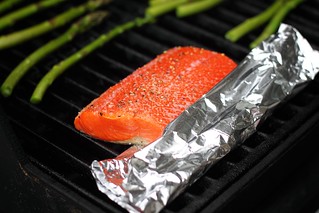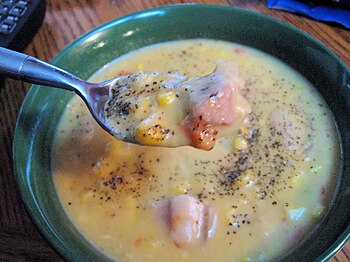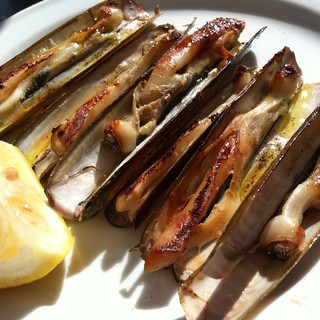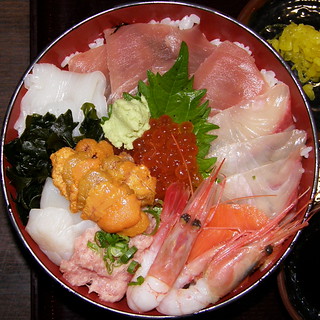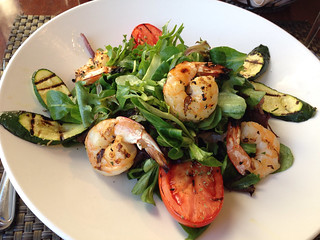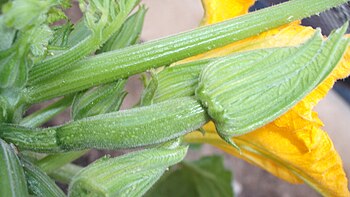When you travel to the Pacific Northwest, one fish you'll be looking for on the menu is salmon. No self-respecting restaurant in this region would have a menu without salmon!
Salmon might be considered the Pacific Northwest's 'Fish Ambassador' - it's plentiful, sustainable, nutritious, and delicious. And, salmon is versatile, too. You don't have to wait for dinner to enjoy salmon. You can find recipes suitable for a breakfast and brunch buffet, too. Salmon is excellent in omelets, crepes, mousse, or tarts. Serve salmon cold in salads and sandwiches. Grilled, poached, or baked, salmon is one fish that fits nicely on every table.
But, before you run off and buy yourself some Pacific Salmon, you may want to know a little bit about what you can expect to find. As you approach the fish counter, you may be surprised to see several varieties of salmon. As a matter of fact, there are seven types of 'anadromous salmon' in the northwest. (Anadromous fish are born in fresh water, then move out to the sea to live most of their life, then return to fresh water to spawn.)
Let's take a look at these seven types of salmon so you have some idea what you might find at the fish counter.
|
|
| Coho (silver) salmon (Oncorhynchus kisutch). (Photo credit: Wikipedia) |
Coho Salmon
This may be a familiar name to many people since the coho salmon was actually introduced into the Great Lakes some time ago. The distinguishing marks of the coho salmon are their large black spots on the upper back and tail. The coho salmon is a popular game fish because it's a good fighter and it tastes good, too. However, over-fishing has caused this salmon to become endangered, so limits now exist to help bring back the population.
Chinook Salmon
This salmon is a biggie, weighing in sometimes at 100 pounds. However, an average catch will be around 25 pounds. Also called King salmon or blackmouth (due to the black coloration in the mouth), this fish has a wide range, from southern California all the way up north to the Arctic. Chinook salmon is considered a prize fish, which has both recreational and commercial value. As long as the juvenile chinook has unpolluted inter-tidal areas with plenty of large logs forming shade and quiet pools, the species can thrive. This species has long been a staple of the Native American diet and economy.
Pink Salmon
You probably recognize the name of this salmon species immediately, especially if you have ever bought canned salmon. The pink salmon is the most abundant species in the northwest. It is also the smallest of the salmon species, weighing on average about 4 pounds. Pink salmon are carnivorous, so will eat insects, crustaceans, and other fish, and also stand a chance of being eaten themselves. They do spend less time in freshwater environments, so are exposed less than other salmon species to the effects of pollution; but not entirely. The pink salmon's numbers are still dropping. This species will be found in heaviest spawning populations in areas north of Oregon, and recreational fisheries do exist in Washington and Alaska, where over 90% of the commercial catch comes from.
Sockeye Salmon
The sockeye salmon spawns in freshwater lakes and streams, then migrates to the ocean to mature. Today, large spawning populations are limited to north of the Columbia river up to Alaska. Dams on the Snake River and Columbia River have destroyed the sockeye salmon population that once flourished and supported large commercial and tribal fisheries. The sockeye salmon harvested in Alaska is now the largest commercial catch of the seven Pacific salmon species. The bright red flesh and excellent taste make the sockeye salmon a most desired, and valuable, fish.
Chum Salmon
Interestingly, Native Americans in the northern regions of the Pacific Northwest use chum salmon as food for the dogs that pull their sleds. The chum salmon juvenile is somewhat smaller than other salmon juveniles, so they are more susceptible to predators at this age. You're less likely to see this salmon at your grocery store, even in the northwest. The oil content (which is so highly praised in salmon for health) is lower than other species of salmon. Also, the majority of chum salmon are harvested in Alaska. And, although the Columbia River in Washington was at one time a great resource for chum salmon, commercial fishing here has dropped off severely.
Steelhead
Also known as rainbow trout, steelhead can return to spawn up to nine times during their lifetime. The name "rainbow" comes from the coloration of the spawning males sporting a dark pink stripe along both sides. This species has two spawning seasons; winter and summer. Steelhead have a long juvenile phase, up to 4 years, which requires a natural habitat of protection in streams and lakes with downed trees and vegetation enough to hide from predators. This fish is a fine recreational catch because of its great fighting fury and its excellent taste. Steelhead caught for sport is mostly done in streams and rivers, not in the ocean. However, most states have limited steelhead fishing in fresh water to catch/release only.
Coastal Cutthroat Trout
Also referred to as sea trout, this particular species of salmon can spawn more than once. However, even with this prolific species, their numbers are declining due to poor ocean conditions and habitat problems. Distinguished by their bright red streaks on the lower jaw, these fish can reach about 20 inches long and weight up to 4 pounds. During the ocean stage of their life, this fish prefers coastal marshes and swamps as a holding and feeding area because they have abundant small fishes for the sea trout to feed on.
Now, when you shop for salmon, you'll have a new appreciation for the variety in this one species of fish. You may not be able to find each and every species, but with this information you will be able to ask some questions to determine which salmon is actually in front of you. No matter which salmon is available, I know you'll enjoy some good eating!
